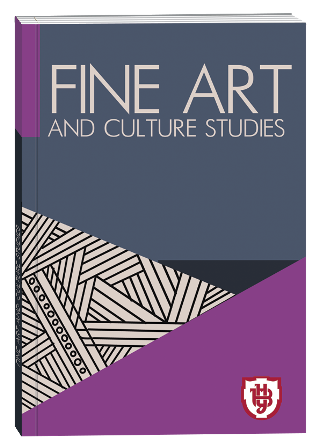A NEW PARADIGM OF THE MODERN VIRTUAL ARTISTIC EDUCATION FROM OWN EXPERIENCE
DOI:
https://doi.org/10.32782/facs-2022-1-4Keywords:
self-organization, digitalization, virtual education, consciousness, thinking, human learner, off-screen mirror, body, tools, art education, methodology, living space, virtual reality, digital moldAbstract
The purpose of the work – the study of modern human educational evolution, with its eternal problem – what is a student? Is it just a biological creature, physically limited by skin and intellectually limited by the contents of the skull? Researching the topic, the author sought to take into account the peculiarities of the mental state of the modern young generation, which is totally dependent on digital technology. The emphasis is on the unexpected expectation of a meeting between a person (teacher) and a machine (student) at the point of obtaining artistic knowledge.
The methodology is to transcend the essence of the student in the field of relations with teachers. Studying the role of the body as a tool to achieve the learning goal. Comparison of the tools of a living human teacher, which is in front of the monitor screen and the screen image of a student who is deprived of natural tools (hearing, sight, touch, etc.). Finding the equivalent of transferring virtual artistic knowledge to the other side of the screen, where the receiver is a digital image of the student. The invention of a new way to return the organic tools of the human body and its components. Scientific novelty in finding the root cause of the rejection in the human body of the ability of natural self-organization in modern digitalization and the reasons for drawing human consciousness as a source of energy in the off-screen mirror of the virtual art process. A new reading of the primary and analytical author's sources of mechanisms for instilling the primordial human awareness of the essence of the acquired knowledge as a transformative evolutionary educational bridge to future generations. Using one's own pedagogical artistic experience as a practical tool for implementing the proposed topic. Conclusions: What exactly will give rise to the transition and long stay of human consciousness where there is no language of the human body, which identifies our state in the living space of art and education? The final result of the possible synthesis of the primary source of human tools and the tools of the screen image of the virtual student is impressive. What to expect if we find ourselves in front of a horrible face of a robot machine that will dictate its own algorithms for obtaining virtual knowledge? Defining human quality as a subject of virtual new knowledge in the period of distance learning.
References
Берджер Д. Блокнот Бенто: як зароджується імпульс щось намалювати? Москва : Ad Marginem, 2012. 168 с.
Берджер Д. Фотографія та її призначення. Москва : Ad Marginem, 2014.220 с.
Крістева Ю. Жест: практика чи комунікація? // Крістєва Ю. Вибрані праці: Руйнування поетики. Москва : РОССПЕН, 2004. С. 114-135.
Круткін В.Л. Матеріальність соціокультурного життя в антропології Андре Леруа-Гурана // Журнал соціології та соціальної антропології. 2015. Т. 18. № 4 (81). С. 187-199.
Ортега-і-Гассет X. «Дегуманізація мистецтва» та інші роботи / Пров. з ісп. Москва : Райдуга, 1991. 638 с.
Парщіков А.М. Знімаю не я, знімає камеру. Б. д. <http://parshchikov.ru/nulevaya-stepen-morali/snimayu-neya-snimaet-kamera>.
Damisch H. Five Notes for Phenomenology of Photographic Image // October. 1978, Summer. Vol. 5. P. 70-72.
Ingold T. Tools for the Hand, Language for the Face : An Appreciation of Leroi-Gourhan's Gesture and Speech // Studies in History and Philosophy of Biological and Biomedical Sciences. 1999. Vol. 30. No. 4. P. 411-453.
Laruelle F. The Concept of Nonphotography. New York : Sequence, 2011. 303 p.
Manovich L. Image Future. 2006. http://manovich.net/content/04-projects/048-image-future/45_article_2006.pdf.
McLuhan M., McLuhan E. Laws of Media : The New Science. Toronto ; Buffalo ; L.: University of Toronto Press, 1988. 252 p.
Miller D. Material Culture and Mass Consumption. Oxford : Blackwell, 1987. 240 p.
Miller D. Artefacts and Meaning of Things // Ingold T. (ed.). Companion Encyclopedia of Anthropology. L.; New York : Routledge, 1994. P. 396-420.







